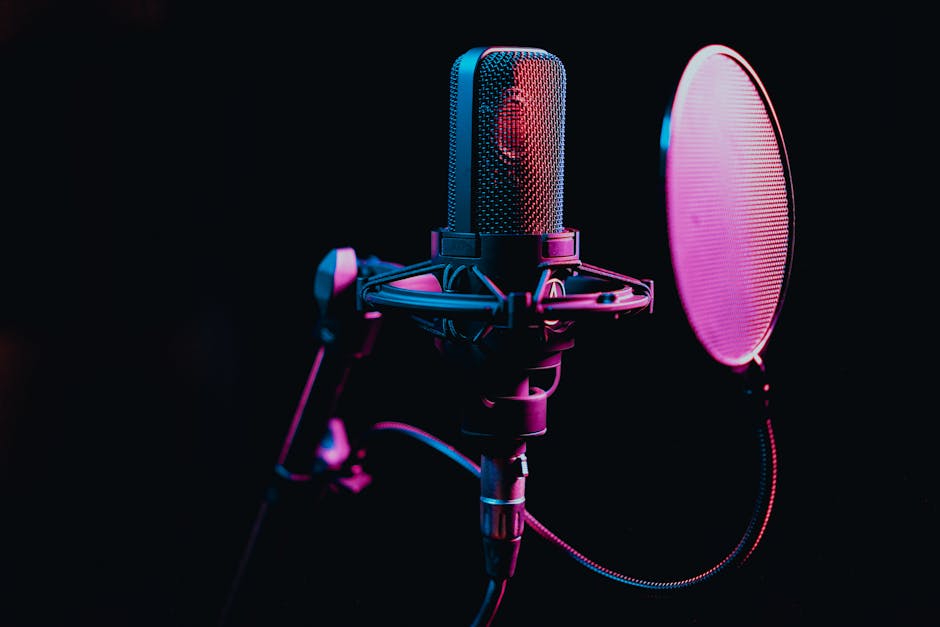My Guide to Setting Up a Podcast Website with WordPress (my Plugins).
My Guide to Setting Up a Podcast Website with WordPress (my Plugins)
So, you’ve got a fantastic podcast idea, great audio content, and a burning desire to share your voice with the world. That’s awesome! But to truly make your podcast accessible, discoverable, and professional, you need a dedicated home on the web. And in my experience, there’s no better platform for this than WordPress, especially when armed with the right set of plugins.
Over the years, I’ve seen countless podcasters struggle with generic website builders or complicated setups. That’s why I put together this guide, detailing my exact process and the specific WordPress plugins I rely on to build a powerful, user-friendly, and SEO-optimized podcast website. This isn’t just a generic “how-to”; it’s a peek into my toolkit and methodology for creating a digital hub that truly supports your podcasting journey.
Laying the Foundation: Why My WordPress Choice for Podcasting Makes Sense
Before diving into plugins, let’s talk about the foundation: WordPress. For me, it’s the undisputed champion for podcast websites for several compelling reasons. It offers unparalleled flexibility, ownership of your content, and an ecosystem of tools (plugins!) that can transform it into a podcasting powerhouse. Unlike closed platforms, WordPress gives you complete control over your brand, design, and most importantly, your valuable RSS feed.
My first step in setting up any new podcast site always begins with a robust hosting provider. You need a host that can handle media files, offer good uptime, and provide solid support. I typically opt for managed WordPress hosting, as it takes away much of the technical headache, allowing me to focus on content. Once hosting is secured and WordPress is installed, it’s time to think about the visual identity. While the theme isn’t a plugin, choosing a lightweight, responsive, and podcast-friendly theme is critical. It sets the stage for how your episodes will be presented and ensures a great listener experience on any device.
Securing the Base: Essential Setup Steps for My Podcast Site
After the initial WordPress installation, my immediate focus shifts to core security and performance. This isn’t glamorous, but it’s non-negotiable. I always install an SSL certificate (most good hosts provide this for free), set up regular backups, and configure basic site security. These foundational steps ensure that the website is safe from threats and runs efficiently even before the first podcast episode goes live. A slow or insecure site will deter listeners faster than anything.
My Core Plugin Arsenal for Seamless Podcast Integration
This is where the “my Plugins” part of my guide truly shines. While WordPress itself is fantastic, these specific plugins are what turn it into a dedicated podcasting platform. My choices are driven by a need for efficiency, powerful features, and ease of use, ensuring that managing episodes and engaging listeners is as smooth as possible.

The absolute cornerstone of my podcast website setup is a dedicated podcasting plugin. My go-to is Seriously Simple Podcasting. This plugin lives up to its name, making episode management incredibly straightforward. It handles everything from creating new episodes as custom post types in WordPress, managing your RSS feed (which is crucial for distribution), and embedding a clean, customizable audio player directly into your posts. It integrates beautifully with most podcast hosting providers, allowing you to upload your audio files and then simply link them within WordPress. Its simplicity doesn’t compromise on power, offering all the necessary fields for episode titles, descriptions, show notes, and cover art, which are essential for podcast directories.
Enhancing Listener Experience & Discoverability with My Chosen Tools
Beyond the core podcasting plugin, I always integrate a few other essential tools to maximize listener engagement and discoverability:
- Yoast SEO (or Rank Math): While Seriously Simple Podcasting handles some podcast-specific SEO, a robust SEO plugin is critical for the rest of your site. I use Yoast SEO to optimize my episode show notes, blog posts, and static pages. This ensures my website ranks well for relevant keywords, driving organic traffic and helping new listeners find the podcast. It provides clear guidance for meta descriptions, titles, and readability, which is invaluable for any content creator.
- WP Super Cache (or WP Rocket): Site speed is paramount. A slow website frustrates users and negatively impacts SEO. I implement a caching plugin like WP Super Cache to dramatically improve loading times by serving cached versions of my pages. This is especially important for media-heavy sites like podcast platforms.
- Wordfence Security: Protecting your website from malicious attacks is non-negotiable. Wordfence provides a firewall, malware scanner, and login security features that act as a strong defense against common WordPress vulnerabilities. Keeping your site secure protects your content and your listeners’ experience.
- UpdraftPlus: Accidents happen. Themes can break, plugins can conflict, or you might make a mistake. UpdraftPlus ensures I have reliable backups of my entire site (files and database), which can be restored with ease. This peace of mind is invaluable.
- WPForms Lite: A simple contact form is essential for listener feedback, media inquiries, or potential guests. WPForms Lite offers an intuitive drag-and-drop builder to create professional contact forms quickly, ensuring listeners can easily reach out.
Crafting Your Podcast’s Digital Home: Essential Design & User Experience Considerations
Having the right plugins is only half the battle; how your website looks and feels to a listener is equally important. My guide emphasizes creating an intuitive and visually appealing digital home for your podcast. This means more than just a pretty design; it’s about making it effortless for listeners to find, play, and subscribe to your episodes.
When I’m setting up a podcast website, I prioritize clear navigation. Listeners should be able to easily find “Episodes,” “About,” “Contact,” and “Subscribe.” Each episode page needs to be well-structured, featuring the embedded audio player prominently at the top, followed by comprehensive show notes, timestamps, and relevant links. I also ensure there are clear calls to action for subscribing on various platforms (Apple Podcasts, Spotify, Google Podcasts, etc.), using attractive icons that stand out. This holistic approach to design and UX ensures that once a listener lands on your site, they have everything they need right at their fingertips.
Beyond the Player: What I Include on Every Episode Page
My episode pages are more than just an audio file. They are rich content hubs designed to deepen engagement and provide value. Here’s what I typically include:
- Detailed Show Notes: A summary of the episode, key discussion points, and any mentioned resources or links. This is also a prime spot for SEO keywords.
- Timestamps/Chapter Markers: For longer episodes, these are invaluable, allowing listeners to jump to specific segments.
- Full Transcripts: I consider transcripts a non-negotiable. They enhance accessibility for hearing-impaired listeners, provide a text-based option for those who prefer reading, and significantly boost your SEO by providing a wealth of keyword-rich content for search engines to crawl.
- Social Sharing Buttons: Easy ways for listeners to share the episode on their preferred social media platforms.
- Related Episodes: A section suggesting other episodes from your archive that might be of interest, encouraging binge-listening.
For more detailed advice on presentation, check out my guide on Choosing the Right WordPress Theme for Podcasting.
Optimizing Your Podcast Site for Listener Discovery and Growth
A beautiful website with great content is only truly effective if people can find it. My guide wouldn’t be complete without a strong focus on discoverability. This involves technical SEO, strategic content creation, and leveraging the power of your RSS feed.
The RSS feed generated by Seriously Simple Podcasting is the lifeblood of your podcast’s distribution. This single feed is what you submit to major podcast directories like Apple Podcasts, Spotify, Google Podcasts, and many more. My process involves carefully configuring the feed settings within WordPress, ensuring all metadata (podcast title, author, description, category, cover art) is accurate and compelling. This metadata is what directories use to categorize and present your show to potential listeners. Once submitted, I regularly check these directories to ensure everything is propagating correctly.
My Approach to Podcast SEO Beyond the Feed
While the RSS feed is crucial, the rest of your WordPress site also plays a huge role in attracting new listeners. Here’s how I optimize it:
- Keyword Research for Show Notes:




Post Comment